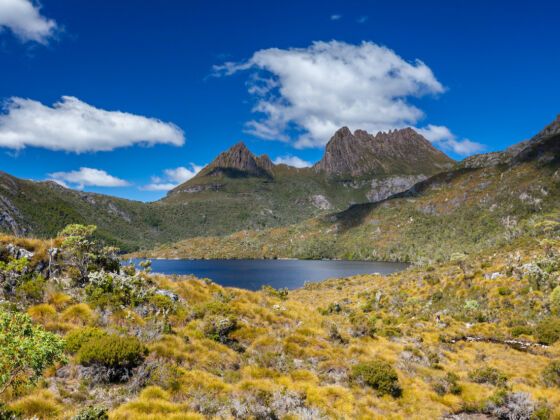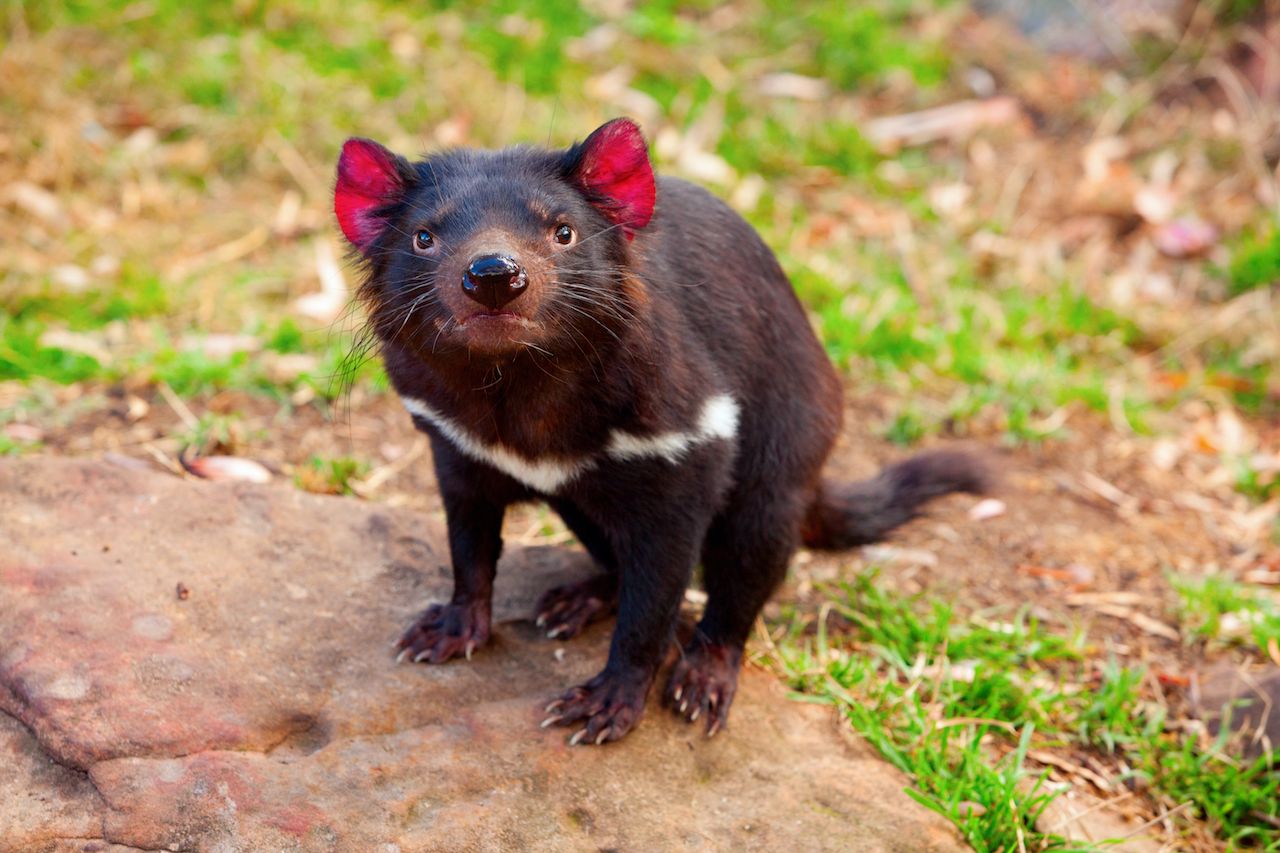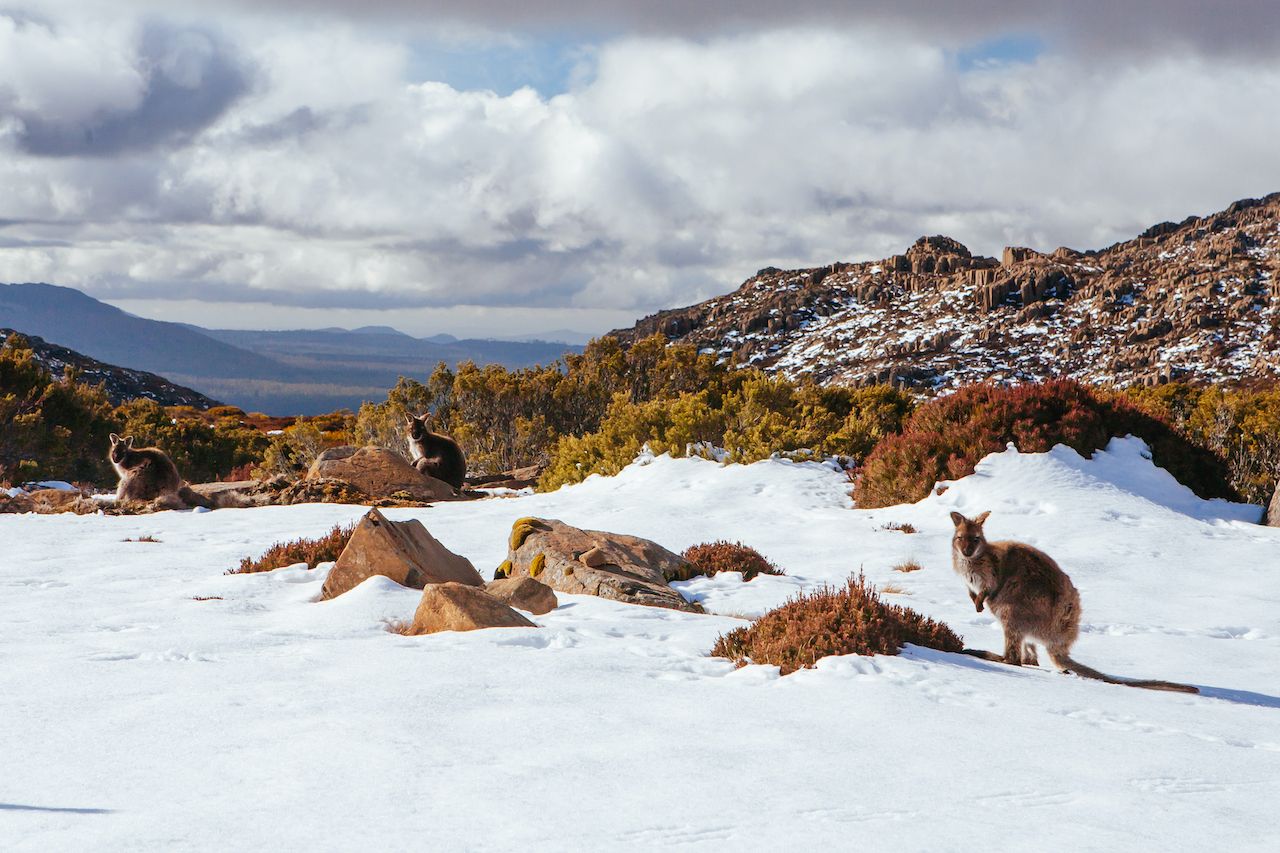South of Australia lies Tasmania, a triangle of an island that looks like it broke off from Australia and is slowly drifting toward Antarctica. Measuring 25,000 square miles, this Australian state has nearly half of its wild countryside designated as national parks. In these parks live unusual wild animals that are hard to spot anywhere else and that make their homes among the diverse eucalyptus trees native to the area.
“Tassie” is just a puddle jump from the mainland city of Melbourne. Its 19 national parks have rugged mountains, pale-sand beaches, and vast stretches of woodland home to endemic wildlife. Much of this land, representing more than 20 percent of the island’s total, is under UNESCO protection as the Tasmanian Wilderness World Heritage Area. Hiking in Tasmania is an opportunity to experience nature in an intimate manner, though many of the top attractions don’t require much of a walk at all. Here’s a rundown of memorable things to see and to do in Tasmania and its national parks, by activity.





